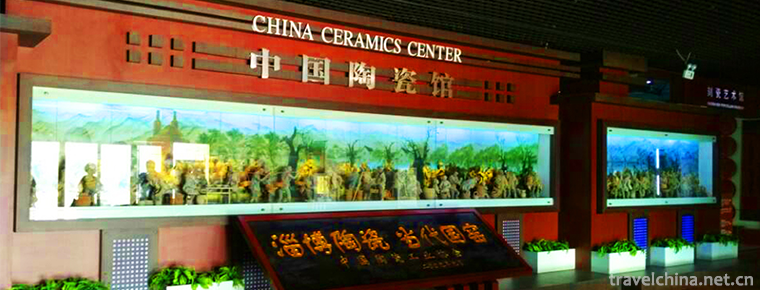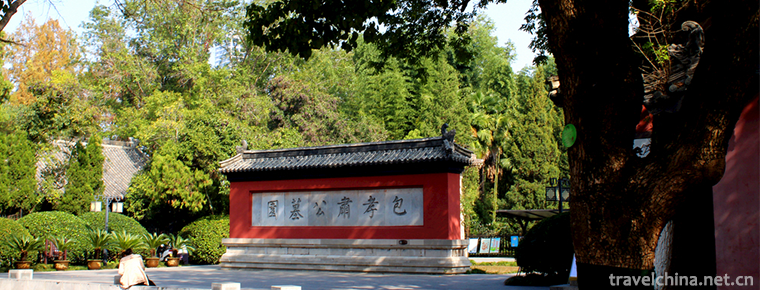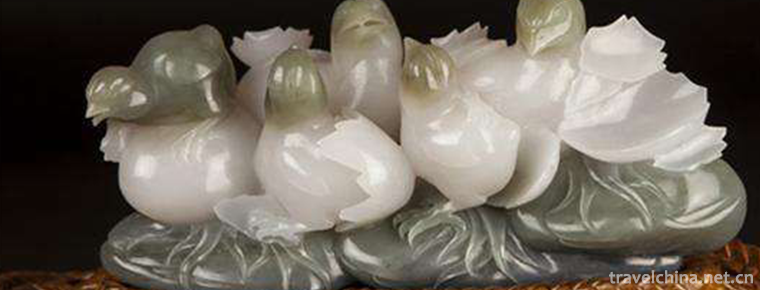Wunijing Handmade Cotton Textile Technology
Wunijing Handmade Cotton Textile Technology
Wunijing handmade cotton textile technology, local traditional handicraft technology in Xuhui District, Shanghai, is one of the national intangible cultural heritage.
Wunijing handmade cotton textile technology has a very long history in China. Cotton and hemp textiles first appeared in the Neolithic Age. The handmade cotton textile technology in the Tang Dynasty was significantly improved and reached a prosperous era in the Qing Dynasty.
On May 20, 2006, Wunijing handmade cotton textile technology was approved by the State Council and listed in the first batch of national intangible cultural heritage list, numbered_-17
historical origin
At the end of Song Dynasty and the beginning of Yuan Dynasty, Huang Daopo returned to Wunijing Town, Songjiang Prefecture. The cotton textile technology in Hainan is combined with the original advanced hemp spinning and silk weaving technology in Jiangnan. Through innovation and creation, a set of hand-made cotton textile technology and tools adapted to cotton fibers has been formed. It has promoted the vigorous development of Jiangnan cotton textile industry centered on Songjiang River.
Huang Daopo and handmade cotton textile technology and China's handmade cotton textile industry have undergone innovation, development, prosperity, recession and transformation stages.
The period of innovation
In the late Southern Song Dynasty, cotton was planted only in the south of the Yangtze River, and Songjiang Prefecture was the earliest place to introduce cotton in the south of the Yangtze River. At that time, the textile technology of Songjiang Wunijing cotton was still very backward. "At the beginning, there was no bicycle, the system of vertebral arch, and it was easy to cut off the seeds by hand, and the wire string and bamboo arc were placed in the case room, so it was very difficult to get rid of the finished products." At the beginning of the Yuan Dynasty, Huang Daopo returned to his hometown to improve the tools of defense, elasticity, spinning and weaving, and the production technology developed rapidly. As a result, thousands of households in Wunijing area made a living and had enough food and clothing. Thus, Huang Daopo's textile innovation technology began in Wunijing and spread throughout Songjiang prefecture. Then there is the north and south of the river.
Development Period
Since the Yuan Dynasty, the cotton textile industry in Songjiang Prefecture has been well-known throughout the country. Cotton is planted all over the Yangtze River Basin and the Yellow River Basin. Wunijing hand-made cotton textile technology has reached a high level. It not only improves the tools for defending, elastic, spinning and weaving, but also makes tools for drawing warp and beating weft, such as dialing truck and Xuanbei. Cotton-planting textiles are popular in Susong area. "The voice of machines is heard by every household", "Tens of thousands of pieces of cloth are produced every day".
Heyday
In the Ming Dynasty, Songjiang Prefecture became the largest cotton textile industry center. Cotton cloth is available in every inch of soil; looms are available in every ten rooms. At that time, there was another one.“
Weaving Shangsongjiang, sizing and dyeing Shangwuhu. Around the 16th century (the mid-Ming Dynasty), cotton cloth became a commodity circulated throughout the country, and also became a popular garment material. By the beginning of the seventeenth century, cotton textile industry had replaced silk and linen, and spread all over the country. Various varieties of cotton textiles have also appeared in various places, and many new textile towns have emerged. According to Zhao Wenbang, a professor at China Textile University, it is estimated that in 1869 cotton cloth was sold over a long distance in the whole country, including seven counties and one hall in Songjiang Prefecture. In 1869, cotton cloth sold over a long distance in the whole country accounted for two-thirds of the total. At the end of Ming Dynasty and the beginning of Qing Dynasty, it gained the reputation of "clothing and quilt under heaven".
Recession period
After the Opium War, foreign cloth was sold to China. Although it was strongly resisted by the Chinese handmade cotton textile industry, under the protection of low tariffs controlled by foreigners, it gradually went from trading ports to the mainland and from cities to the countryside, thus making the Wunijing handmade cotton textiles completely on the edge of extinction. In addition, China's own cotton textile mills have emerged in coastal areas. However, due to the invasion of Japanese imperialism and China's civil war, China's cotton textile industry and rural hand-made cotton textile industry have suffered setbacks and are dying.
Transitional Period
After liberation, along with the industrial revolution, Shanghai Textile Bureau with 500,000 industrial workers is the largest industrial workforce in Shanghai. Cotton textile industry has always been an important pillar industry in Shanghai. In the 1980s, with the increasing pace of reform and opening up and the constant adjustment of industrial structure, the cotton textile industry in Shanghai has achieved historic changes. In recent years, the cotton textile industry has completed its migration to the West and inland provinces.
Technological characteristics
Using the experience and technology of Yazhou quilt for reference, Huang Daopo developed the dyeing and jacquard technology of handmade cotton textiles on the basis of the traditional weaving technology of Han people. Colored weaving refers to the cotton yarn used in weaving is dyed with various colors in advance; jacquard refers to the weaving process, using the change of warp and weft yarn color or structure to weave various complex patterns. "Miscellaneous yarn" is the staggered arrangement of warp yarns of different colours during drawing; "matching colour" is the alternating weaving of weft yarns of different colours during weaving; "synthetic yarn and twist flower" is the weaving of large jacquard fabrics by means of a bunch of brown jacquard devices. The jacquard device is commonly used for "folding branches and group phoenixes" and the "chess game" is realized by yarn-dyed weaving technology. Huang Daopo weaves "Wunijing quilt" by using yarn-dyed and jacquard weaving techniques.
Technological process
Huang Daopo's innovation and creation not only improved the production tools and cotton weaving technology, but also formed a relatively complete and systematic technological process from grinding seeds, spandex, spinning to weaving: the first process of ginning machine, two processes of wood spine bow string, three processes of combing into cotton sliver, four processes of rotary spinning machine spinning into yarn, five processes of drawing into warp, six processes of sizing, etc., forming one process. A complete set of 13th century advanced cotton textile technology process.
Inheritance and Protection
Inheritance value
Huang Daopo's cotton textile technology has changed the tradition of silk and hemp as the main clothing for thousands of years, changed the economic structure of the south of the Yangtze River, gave birth to a new cotton textile industry, and changed the living customs and traditional marriage customs in the south of the Yangtze River. It can be said that Wunijing handmade cotton textile technology is one of the core contents of China's textile technology.
Current situation of inheritance
Nowadays, the handicraft cotton textile and printing and dyeing handicraft inheritors are already 70 or 80 years old. There is a serious lack of specialized books and image materials about the technology, and the traditional handicraft is in danger of losing its inheritance.
Heritage figures
Kang Xinqin, female, Han nationality, born in 1932 in Shanghai. In June 2007, Kang Xinqin was selected as the representative successor of the first batch of national intangible cultural heritage projects and declared in Xuhui District, Shanghai.
protective measures
In commemoration of the textile innovators Huang Daopo and Wunijing handmade cotton textile skills in the Yuan Dynasty, in the early 1990s, the original Huangdaopo Temple and its base were used to rebuild the Huangdaopo Memorial Hall.
In 2006, Wunijing handmade cotton textile technology was listed in the first batch of China's national intangible cultural heritage list.
Huangdaopo Memorial Hall, Huajing Ziyang Middle School and Yuannan Middle School in Xuhui District of Shanghai have established Wunijing Handmade Cotton Textile Technology Inheritance Base.
social influence
international repercussions
In the early seventeenth Century, China's cotton cloth was sold to Makassar and Macao in the Southeast Asia, and Japan. In the 1930s, cotton cloth occupied the first place in Sino-Indian trade. The British East India Company has also expanded the distribution of Chinese cotton cloth to other European countries. After the 1950s, Spain, the Netherlands, France, Denmark, Sweden and other European countries also carried out shipments of Chinese cotton cloth. By the middle of the 19th century, Britain had become the main buyer of Chinese cotton cloth. The Netherlands, France, Denmark, Sweden, New Zealand, Italy and other countries import cotton cloth from Guangzhou. From 1804 to 1829, American merchant ships imported cotton cloth from Guangzhou. Most of them were shipped back to China for sale. A small part of them were sold to Europe, South America, West Indies, Manila and Hawaii.
Important Exhibitions
On June 1, 2018, the "Shanghai Tubu Classic Pattern Exhibition" was held in East China Normal University. The Wunijing Handmade Cotton Textile Technology was exhibited.
From September 13 to 17, 2018, the 5th China Non-Heritage Expo opened in Jinan, and Wunijing handmade cotton textile technology was exhibited.
Cultural anecdotes
It is said that Huang Daopo was the founder of Wunijing handmade cotton textile technology. When she was a child bride, she bravely escaped from her home and came to Yazhou, Hainan Island (now Haikou City), because she could not bear the abuse of the feudal family. Since then, she has lived in Hainan Island for more than 30 years. During her stay in Yazhou, she modestly learned textile from the Li people and mastered advanced technology. During the year of Yuanzhen, she brought the textile technology learned in Yazhou back to her hometown for gradual improvement and innovation, improved spinning efficiency, and improved the textile level in her hometown and in the southern part of the Yangtze River.


-
QomolangmaEverest
Mount Qomolangma (Mount Qomolangma) is the main peak of the Himalayas and the highest mountain in the world. It is located on the border between China and Nepal. The peak is located in China.
Views: 283 Time 2018-10-30 -
Mutual Aid Tu Nationality Hometown
Huzhu Tujia Hometown Scenic Area is located in Weiyuan Town, Huzhu Tujia Autonomous County, Haidong City, Qinghai Province. It is 31 kilometers away from Xining City.
Views: 105 Time 2018-12-12 -
China Ceramic Museum
The China Ceramic Museum is located in the Cultural Square in the center of Zibo City. On the basis of Zibo Exhibition Hall in April 2001, it was transformed by large-scale investment.
Views: 126 Time 2018-12-22 -
CITIC Golf Seaside Resort
Shantou CITIC (China International Trust and Investment Corporation) Resort Hotel is a foreign-related tourist resort hotel affiliated to Shantou Company of CITIC South China Group..
Views: 152 Time 2018-12-22 -
Package Park
Baoyuan, or Baoyuan for short, is located at 72 Wuhu Road, Hefei City, Anhui Province. It was built in 1063, the seventh year of Jiayou in the Northern Song Dynasty. It was built in memory of Baozheng.
Views: 410 Time 2018-12-26 -
Binyang Gulong Festival
Binyang Gulong Festival is a unique traditional festival in Binyang County, Guangxi. It is a comprehensive folk festival that integrates Han and Zhuang cultures..
Views: 219 Time 2019-04-04 -
Construction Techniques of Miaozhai Diaojiao Building
Miaozhai hanging-feet building is evolved from the form of "nest dwelling". It is built with bamboo and wood. The lower part of the building is hollow. It is called "semi-dry fence".
Views: 108 Time 2019-06-05 -
Uygur Dastan
Uygur Dastan is a kind of Uygur singing and playing music. It is a kind of long narrative poem with rap and singing. It is a long poem with complete stories and characters. It is a folk art form with .
Views: 137 Time 2019-06-26 -
Jade Carving in Yangzhou
Yangzhou has a long history of jade carving. Jade carving in Yangzhou reached a new peak in the Tang Dynasty, and carving and striping appeared in the Song Dynasty. During the Qianlong reign of the Qi.
Views: 95 Time 2019-07-10 -
Nightlight Cup Carving
The manufacture of luminous cup needs 28 complicated processes. First of all, we need to select the material, then make the blank according to a certain size to form the preliminary noctilucent cup. F.
Views: 120 Time 2019-07-11 -
Yicheng Flower Drum
Yicheng Huagu, according to historical records, existed during the Zhenguan period of the Tang Dynasty, reached its peak in the Ming Dynasty, and only in the Qing Dynasty did this activity have a clea.
Views: 192 Time 2019-07-13 -
China lantern Museum
Located at No.6, Gongyuan Road, Zigong City, Sichuan Province, China lantern museum is a special institution for "collection, protection, research and display" of Chinese lanterns approved by the State Administration of cultural relics (92). It is the only professional museum about lantern culture in China and even in the world. .
Views: 347 Time 2020-10-15











